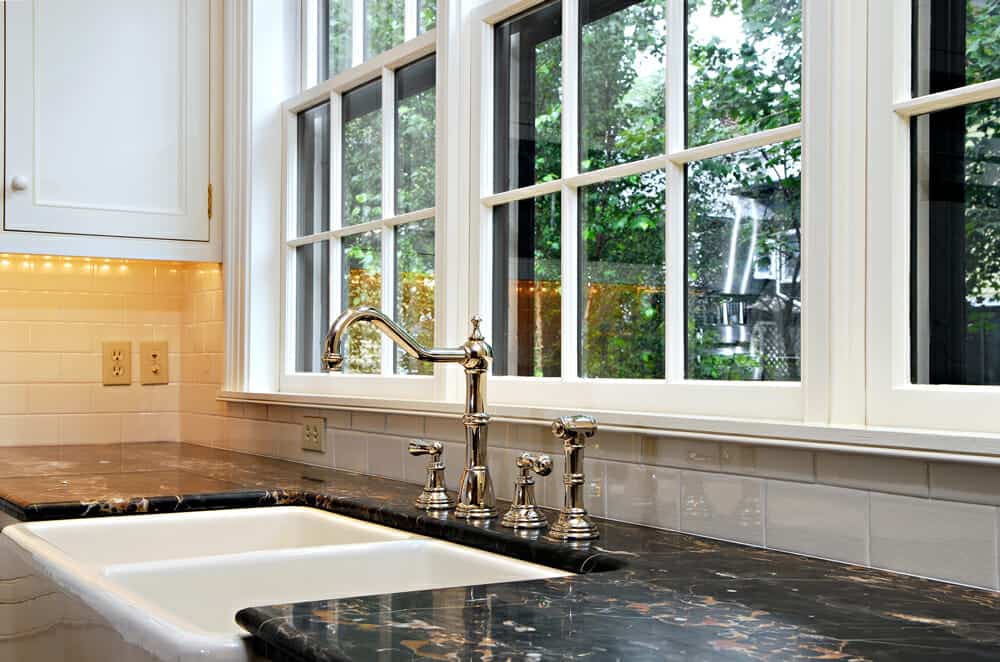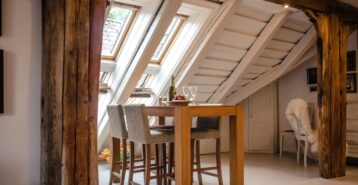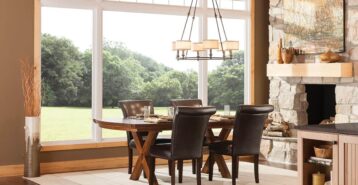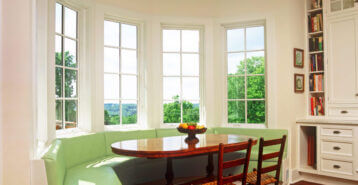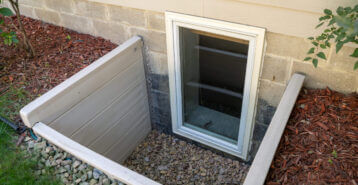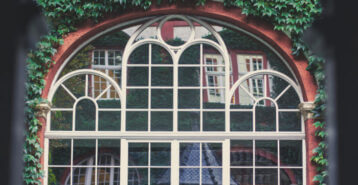What Is a Double-Hung Window?
Replacement double-hung windows share many similarities with single-hung windows, with one key difference. With a single-hung window, the bottom sash is moveable. It raises up and down depending on how much ventilation you want. The top sash (window pane) is fixed, though. With a double-hung window, both sashes can slide up or down. This dual operability allows you to change the amount and type of ventilation entering and exiting your home.
Why is this important? Well, since heat rises, opening the upper sash allows warm air to exit your home. If you want to let cooler air can enter your home, you can open the lower sash. Picture a two- or three-story home. On the upper floors, you open the top window sashes to let hot air escape the home. On the lower floor, you open the bottom sashes to let cooler air inside. It’s a natural and inexpensive way to lower the temperature and increase the comfort of your home.
Are a Double Window and Double-Hung Window the Same Thing?
No, they are not. A double window refers to two windows installed side by side. Sometimes they windows are even mullioned together to make them appear flush. You can make a double window out of almost any window type.
A double-hung window refers solely to the type of window that can be opened from both the top and the bottom. You can install two or more of these windows side by side if you like the appearance of a larger window by having them mullioned together, as described above. You can even place three windows in a row to maximize light and ventilation.
What Does a Double-Hung Window Cost?
The national average cost for a double-hung window is $608. Our cost guide breaks down prices, labor rates, and material costs to help you find a more accurate estimate.
What Are Popular Alternatives to Double-Hung Windows?
When homeowners are considering replacing this type of window, or installing one for the first time, they are usually comparing them against two other options: single-hung windows and casement windows.
When Should I Choose Single-Hung Instead?
A single-hung window is a great choice for homeowners if you:
- Are on a budget. Single-hung windows are cheaper.
- Do not live in an especially hot climate. The superior ventilation of a double-hung window may not be necessary for your region.
You can read all about double vs. single-hung windows on our blog for more details.
| Feature | Double-Hung | Casement | Single-Hung |
|---|---|---|---|
| Ventilation | Excellent, open top and bottom | Excellent, opens fully outward | Limited, only the bottom sash opens |
| Energy Efficiency | Moderate | High, tight seal when closed | Moderate, fewer moving parts |
| Ease of Cleaning | Easy, sashes tilt inward | Moderate, exterior may need access | Harder, only one sash typically tilts |
| Best For | Traditional homes, multi-story ventilation | Windy or energy-conscious regions | Budget projects, simple window replacements |
| Appearance | Balanced, classic style | Sleek, modern with unobstructed views | Traditional and simple |
| Cost | Mid-range | Higher due to hardware and seal | Most affordable option |
When Should I Choose Casement Instead?
Casement windows are a popular choice for homeowners who:
- Want the most energy-efficient window. Casement windows have a very tight seal when closed.
- Want to maximize views. Casement windows open outward instead of sliding up and down, so they have no lines from window sashes interrupting the glass.
We have all the reasons to choose a double-hung or casement window over on our blog.
Double-Hung Window Sizes
Double-hung windows come in a wide variety of standard sizes from which to choose.
- Widths: 24″ min to 48″ max
- Heights: 36″ min to 72″ max
You can read our guide to size guide to learn more.
Double-Hung Window Frames, Glass, and Accessories
Once you’ve picked a window type, you’re going to want to start narrowing on the best frame type, glass, and any needed accessories like window locks and screens. Here’s what we recommend.
Window Frame Types
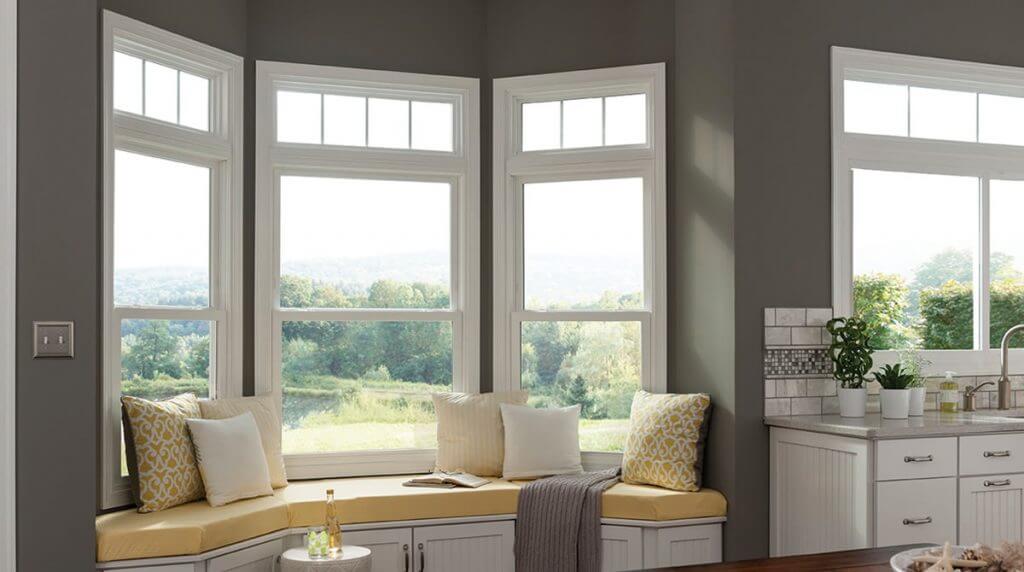
Double-hung window frames are commonly available with wood, vinyl, fiberglass, or aluminum frames. Here are the pros and cons of each:
- Vinyl: Vinyl is the most affordable option, but its longevity can be reduced when continually exposed to harsh outdoor environments.
- Fiberglass: Fiberglass window frames are slightly more expensive than vinyl, but they offer a compelling blend of weather resistance, strength, insulation and value.
- Aluminum: Aluminum window frames are strong and extremely weather resistant, but they do allow more thermal energy to pass through the frame than the other window frame materials.
- Wood: Wood window frames are the most expensive window frame material, and wood also offers unmatched aesthetic appeal. These types of frame have been used for centuries and, when properly painted or stained, they are extremely durable. However, wood is subject to more expansion and contraction than other types of window frame materials, which could lead to window performance issues over time.
Double-Paned vs. Triple-Paned
Double-pane windows are common in the majority of new homes, especially tract subdivisions built by large national and regional homebuilders. Homeowners with double-pane windows installed in their residences can realize nearly 80% greater energy efficiency from their windows than comparable homes with single-pane windows.
Triple-pane windows, meanwhile, are an upgraded window option for homeowners who are focused on increasing their home’s energy efficiency. The benefits noted for double-pane windows are increased exponentially through an additional layer of gas-filled and coated window glass.
Your choice will ultimately depend on where you live (for example, you may lean toward triple-pane if you see especially hot or cold temperatures in your region) as well as your budget.
Glass Types
The kind of glass you choose will impact your window’s overall energy-efficiency. Tempered glass (also called safety glass) may be required for your window depending on where the window is being installed, but it is also a good choice for home’s in stormy regions. You can also get your window glass insulated to increase it’s performance, which may be especially important with double-hung windows since their dual operation leaves them as one of the less energy-efficient window types.
You can read more about glass types and even take our quiz to find the glass you need for your window.
Locks
The most common types of window locks for double-hung windows are:
- Sash locks. These secure the two sashes together, preventing them from being opened from the outside.
- Keyed locks. These require a key to unlock and offer a high level of security.
- Vent locks. This lock type allows the window to be locked in a slightly open position for ventilation.
- Hinge locks. Hinge locks prevent the window from being forcibly opened.
Should I Get Screens for Double-Hung Windows?
Since double-hung windows are usually chosen for their excellent ventilation, you should also consider getting screens. That way, you can get all the air you need without any bugs or stray leaves finding their way inside. There are two types to choose from:
- Flat screens. These are traditional screens installed on the exterior of the window. They can be removed, but especially on higher-level floors, that can be a tricky job.
- Retractable screens. These screens roll up and down so you can choose when you want to use it. The main benefit of this screen type is preserving the view out the window, since you won’t always have to see the screen. However, they are more expensive than flat screens.
Frequently Asked Questions
What Is the Point of Double-Hung Windows?
Double-hung windows are designed for flexibility, ventilation, and ease of use. Unlike single-hung windows, which only open from the bottom, double-hung windows have two operable sashes, meaning both the top and bottom panes can slide up or down. This allows for better airflow, especially if you open both sashes at once to let warm air out the top and cool air in from the bottom. These windows are also easy to clean since many models tilt inward, making it simple to wipe down the exterior glass from inside your home.
What Are the Disadvantages of Double-Hung Windows?
While double-hung windows are a popular choice, they do have a few drawbacks:
- Lower Energy Efficiency: Because of their sliding sashes, they aren’t as airtight as casement or fixed windows. That can lead to more heat transfer and higher energy bills in extreme climates.
- More Moving Parts: Two operable sashes mean more hardware, which can wear out over time and may require more maintenance or repairs.
- Not Ideal for Extreme Weather: In areas with high winds or heavy rain, the seals on double-hung windows can be less effective than other window types.
How Do I Know If My Windows Are Single or Double Hung?
The easiest way to tell is by checking how the sashes move:
- Single-Hung: Only the bottom sash moves. The top pane is fixed in place.
- Double-Hung: Both the top and bottom sashes slide vertically. In many newer models, both sashes also tilt in for easier cleaning.
Open your window and try sliding both sashes. That will quickly confirm the style.
Which Is Better, Double Hung or Casement Windows?
It depends on what you prioritize:
Choose Double-Hung Windows If You Want:
- Traditional style and appearance
- Sashes that tilt in for easy cleaning
- A good fit for vertically oriented spaces
Choose Casement Windows If You Want:
- Maximum ventilation and energy efficiency
- A tighter seal that helps block out drafts
- A modern look with unobstructed glass views
There’s no one-size-fits-all answer. Your choice will depend on your home’s style, climate, and how you plan to use the window. Many homeowners install a mix of both for functionality and curb appeal.
Is a Double-Hung Window Right for Me?
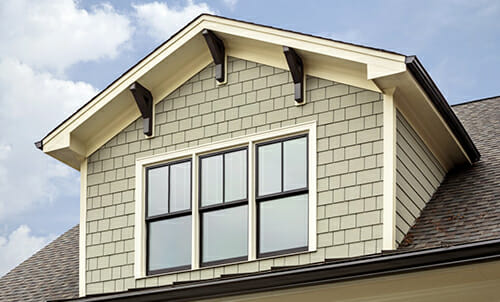
Double-hung windows are extremely popular across the U.S., and for good reason. They are the right choice for you if:
- You get hotter or more humid weather during parts of the year.
- You want to let warm air escape your home while also letting cool air in.
- If you are only replacing windows on the second or third floor of your home, then letting warm air escape through the top sash may make the most sense for you.
However, you may want to explore a different window type if:
- You are on a tight budget.
- Heat and hot weather are not a major concern for you.
- You are only replacing windows on the first floor of your home.
You can also explore everything from sizing to buying guides to best window brands and beyond on our main window home improvement page.
Now that you know everything from “what is a double-hung window” to what frame type may work best for one in your own home, you should talk to a window contractor to get a professional opinion on whether these windows are a good choice for your area.
